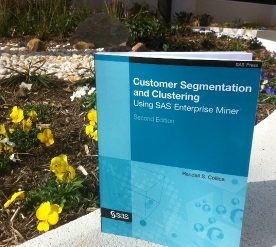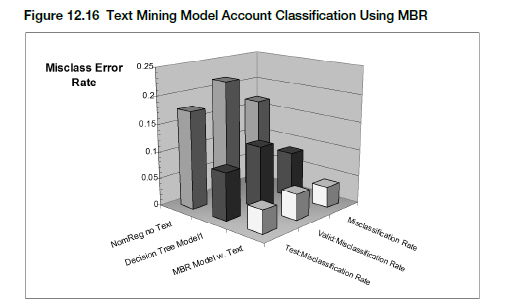 This week's SAS author's tip comes from Randy Collica and his new book Customer Segmentation and Clustering Using SAS Enterprise Miner, Second Edition. Randy, a Senior Solutions Architect for SAS, is extremely knowledgeable and approachable. In his new book, Randy uses SAS Enterprise Miner and the most commonly available techniques for customer relationship management (CRM). If you already have the first edition, four new chapters and additional updates have been added. As always, you'll enjoy Randy's straightforward style and insight.
This week's SAS author's tip comes from Randy Collica and his new book Customer Segmentation and Clustering Using SAS Enterprise Miner, Second Edition. Randy, a Senior Solutions Architect for SAS, is extremely knowledgeable and approachable. In his new book, Randy uses SAS Enterprise Miner and the most commonly available techniques for customer relationship management (CRM). If you already have the first edition, four new chapters and additional updates have been added. As always, you'll enjoy Randy's straightforward style and insight.
After reading Randy's tip below, visit his author page to read a free chapter from the book and to view the appendix of data sets used in examples. Also, be sure to register for Randy's upcoming, free SAS Talks webinar on Customer Segmentation Made Simple. Event date is March 8.
The following excerpt is from SAS Press author Randall S. Collica and his book "Customer Segmentation and Clustering Using SAS Enterprise Miner, Second Edition" Copyright © 2011, SAS Institute Inc., Cary, North Carolina, USA. ALL RIGHTS RESERVED. (please note that results may vary depending on your version of SAS software)
12.5 Using Text Mining in CRM Applications
It is rather difficult to demonstrate textual data in a CRM application without actually giving you data that should not be published. So, in lieu of doing this, I will describe a text application that I performed in my business and give you the thought and mining process. The business problem given to me was not really supposed to be a text mining exercise at all. I was consulting with an internal client about his sales segmentation. He had classified each of 250 or so top accounts in that industry into one of five possible groups. Four of these groups were attitudinal segments depicting the level of their technology and their feelings that this technology would help them have a competitive advantage. The fifth group was an unknown group where the marketing and sales did not know how to classify the account. When the project came to me, the marketing clients desired to know more about these segments from a product profile standpoint, which I was able to accomplish using the techniques given earlier in Chapter 10, “Product Affinity and Clustering of Product Affinities.”
What transpired after this profiling effort was a discussion that led to the usage of our call center database that housed unstructured notes and comments that our sales representatives had entered when communicating with customers. The desired goal in this project was to use the segmentation to create some specific campaigns with differing messaging and offers tailored to each segment group. That is when I had the idea of combining the structured and unstructured call center notes together along with the accounts that were already classified into the four segment groups. Leaving the fifth (unknown) group out of the data mining, I was able to create a predictive classification model using the unstructured notes to classify the accounts into one of the four possible attitudinal segment groups. With a classification model in hand, I could then score the fifth (unknown) accounts into one of the four segments.
Figure 12.16 shows the classification of three different models: a regression model using only structured data, a decision tree using only structured data, and a memory-based reasoning (MBR or nearest neighbor model) of the unstructured notes data. The error rate on the MBR model using text notes was less than 5% on the Training, Validation, and Test data sets. The MBR model was applied to the scoring of unknown accounts, and the completed scoring allowed a more complete targeted list for use in future campaigns.


3 Comments
Hi, thank you for reading our post and for your question about Text Mining and Morphological Analysis. There is a SAS forum that I think can help you. It's called SAS Data Mining and Text Mining: https://communities.sas.com/community/support-communities/sas_data_mining_and_text_mining
This is a good resource for questions or discussions about Text Mining. Best wishes with your research and please let me know if we can be of further assistance.
Thank you very much for giving me an opportunity to share and post my query.
Im pursuing my research in Text Mining , can u kindly let me know whether any tools i can make use of for Morphological analysis.
Thanks in advance
Eagerly waiting for your reply.
S. Murugesh
Hi S. Murugesh, I don't know much about Morphological analysis, however, I did notice that most articles published in this area seem to stem from Europe and I haven't seen too much here in the US. Sorry I can't be of more help, but this isn't a common area that I've seen too much before. /Randy